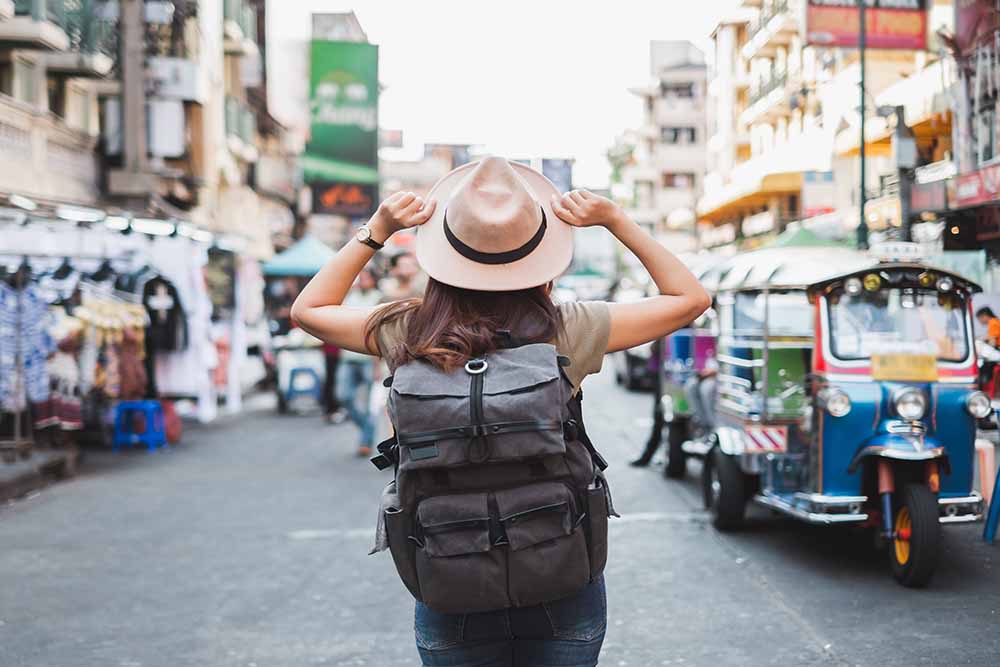
For many of us, travel is one of life’s greatest pleasures. We love the thrill of boarding a plane to a new destination, cruising around islands, or road-tripping through a country. However, the activities involved in travel can be incredibly harmful to the environment. Did you know that
Carbon offset your flight Book a direct flight Book economy tickets Travel with a carry-on Take a bus or train for shorter journeys Travel slow Keep your towels Eat locally Explore efficiently
Carbon offset your flight
This is an opt-in offered by select airlines in which you can pay a small fee to help make up for the CO2 that is released in the air during your journey. When you opt into a carbon offset offer, your portion of CO2 created from the flight will be calculated, and the money you contribute will go towards a carbon offsetting project. These types of projects are normally reforestation projects or energy projects which invest in renewable technology. Look for projects that say VCS (Verified Carbon Standard) or Gold Standard - if you see these labels, you can be confident that the program meets the necessary requirements to truly be considered a carbon offset program.
There is some moral debate around carbon offset initiatives and the idea that it’s okay to do it as long as you can pay for it; however, one can also argue that at least a problem is recognized and accountability steps are being taken. That being said, while carbon offsetting your flight is a good step, there are plenty of other things you should also be doing while travelling to help reduce your carbon footprint.
Book a direct flight
One of the easiest ways to help decrease your carbon footprint while travelling is to book a direct flight. Some people assume that short flights are better for the environment since the plane isn’t spending as long in the air, but the truth is that the take-off uses the most fuel. So a direct flight, where you only take off once, is better for reducing your carbon footprint than taking a series of two or three connecting flights.
Book economy tickets
Flying first class is a luxurious treat that many of us would love to be able to do on every flight. But did you know that first class seats produce about double the CO2 that a regular economy seat does? This is because a passenger’s CO2 emissions depend on how much space they take up on the plane.
Travel with a carry-on
When packing for travel, try to stick to a carry-on bag instead of checked luggage. Heavier flights burn more fuel, which means that leaving that bulky suitcase behind can not only save you on added airport time and checked luggage costs, but it can also help save the environment.
Take a bus or train for shorter journeys
Sometimes flying is the only option, but for shorter journeys consider taking a bus or train instead. Trains emit six times less CO2 emissions than a plane would; a significant amount, especially for individuals who travel short distances frequently for business. Sure, the train might take longer, but if time allows it is the better option for the environment. Plus, many trains can be quite comfortable (certainly more comfortable than a plane) and offer wifi, which will allow you to work or stay entertained as you travel.
Travel slow
As discussed above, the physical activity of travelling releases a lot of CO2. So if you are looking to reduce your carbon footprint, just stay put. Travel slow. Spend longer in a place rather than hopping around from city to city or country to country.
Keep your towels
Do you wash your towels every single day when you are at home? Probably not. So, why do you need them changed daily at your hotel? Chances are you don’t, so save the water that would be used to launder them. After your shower, rather than leaving them in a pile on the floor to be changed, hang them back up so that the hotel staff know that they can leave them for you to use again.
Eat locally
When finding places to eat while travelling, look for restaurants that serve local food. Look for farm-to-table type spots or restaurants that pride themselves on sourcing local ingredients. If you are someone who grocery shops while travelling, choose to buy the local and in-season fruits and vegetables. Do your best to avoid imported foods that require a lot of packaging and transportation.
Explore efficiently
Once you have arrived at a destination, you’ll need to figure out how to get around. Instead of using taxis or ride-share programs like Uber, use the public transportation system. Depending on the size of the area you’re exploring, you can also consider renting a bike or using your own two feet.
Hannah Logan is a Canadian travel writer who dreams of being just like Indiana Jones. You can follow her travels on her personal travel blog
Eat Sleep Breathe Travel where she shares her travel tales and (mis)adventures around the world.